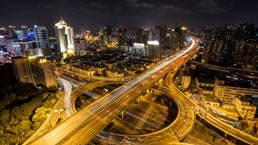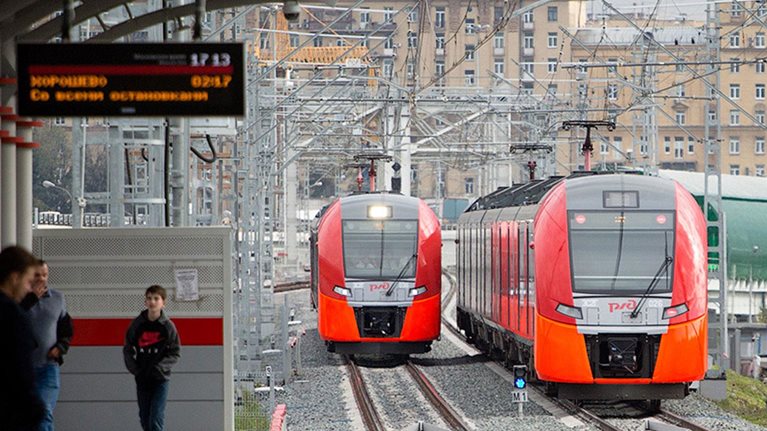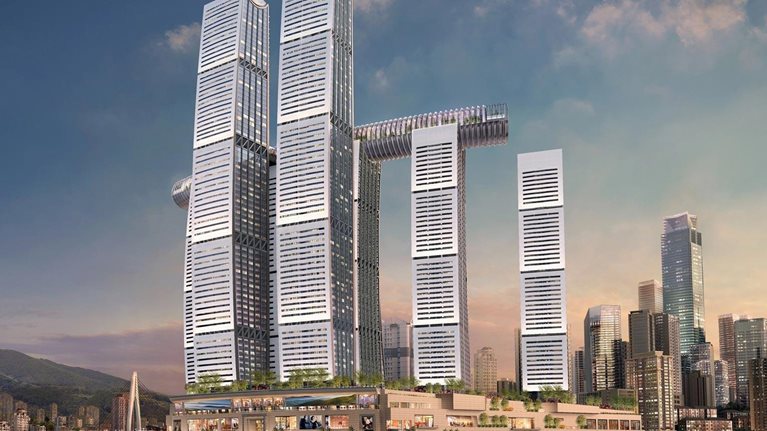Flanking the Huangpu River in the north east of downtown Shanghai, Yangpu is a locality where history rubs shoulders with modernity and tradition sits alongside innovation. Once dominated by heavy industry, Yangpu is now a center of commerce and hi-tech. Today, it is the focus of a government initiative to “relentlessly enhance Shanghai’s influence and competitiveness in global technology innovation and industrial transformation.”1
Stay current on your favorite topics
China is advancing its openness and innovation strategy through policy initiatives at the national and regional levels, which ultimately shape decision making at the individual firm level. The country’s ambitious Belt and Road Initiative focuses on connectivity and cooperation between Eurasian countries and seeks to link some 65 percent of the world’s population via economic and infrastructure routes. In Shanghai, Yangpu is the beating heart of this global vision, and plans are afoot to transform the district into a world-class innovation and creative hub—a three-stage project spanning ten years.
Bringing the vision to life in Yangpu
By the end of 2020, the plan is for more than 100 innovation companies in intelligent manufacturing, digitization, and fintech to create 50,000 job opportunities on the Yangpu Waterfront. Its leaders hope to combine existing and newly developed infrastructure to offer:
- an innovation hub that attracts global resources
- a platform on which urban life will thrive
- a practice platform that prioritizes post-industrial transformation
This ecosystem will be jump-started in part through planned Sino-German cooperation that hopes to attract the next wave of manufacturing headquarters, establish German companies in China, and foster small and medium enterprise collaboration with a focus on smart manufacturing, digital technology, and creative design. Industry 4.0 initiatives will be central to this plan—involving the widespread adoption of data, analytics, automation, and advanced materials as part of a global manufacturing model, including manufacturing in Yangpu.
The second phase of development, slated to take place between 2021 and 2025, plans for further international collaboration at industry, technology, and educational levels. By 2030, Yangpu aims to be a world-renowned hub for creativity, commerce, and invention that is home to upwards of 15 Fortune 500 Industry 4.0 players, with more than 170,000 employed by innovative businesses. This vision calls for the local economy to rank among the top ten localities for doing business, while the number of patent applications per 10,000 people will rise from 3.3 to more than 100.
Meeting challenges with solutions
There are, of course, challenges—not least that Yangpu Waterfront must compete on a global stage with other world-class cities to attract talent, inward investment, and employment opportunities. The strategy is to build on the area’s industrial legacy and establish an innovation ecosystem with a focus on Industry 4.0. This smart, sustainable, and sharable community will seek to attract and retain creative talent, entrepreneurs, and innovators with smart city solutions.
It will be equally essential to overcome the challenge of positioning the locality as “future-oriented” while retaining the district’s historical heritage. Development will in large part be informed by the need to establish an attractive living and working environment that balances commercial and residential priorities—essentially building an environment where innovators can live, work, learn, and play. Policy decisions will seek to facilitate this: for instance, qualified foreign professionals working for technology companies will be eligible for permanent residency.2
Would you like to learn more about our Capital Projects & Infrastructure Practice?
Last but not least, there is the challenge of how to provide affordable housing to accommodate young talent in a waterfront area where the average housing price is above $12,000 per square-meter—exceeding prices in cities such as Dubai, Stockholm, or Sydney.3 This will involve creating modern living solutions for the younger generation: for example, creatively renovating abandoned warehouses and factories to provide rental apartments or lofts with shared facilities such as communal kitchens, gyms, living rooms, and even libraries. More than 60 percent of these new Yangpu dwellings could be based on this co-sharing model, creating affordability and accommodating more residents.
Key themes for emerging cities
What can other cities learn from this project? In practice, this vision is founded on three principal themes: targeted talent—especially “boundless innovators”; a focus on options that can grow a cluster of Industry 4.0 specialists; and smart city solutions that optimize the living and working environment.
Targeted talent. This will be underpinned by programs to attract talent, supported by education initiatives designed to build relevant skillsets and enhance global knowledge sharing. Planned initiatives include introducing China-Germany experimental schools, with a focus on practical skills, access to nature, personalized teaching, team learning, mental and philosophical education; top-tier business and engineering schools; and “smart sharing” events to encourage lifelong learning. These will go hand in hand with a new entertainment economy—theaters, shopping malls, and virtual reality spaces—to attract the right demographic.
Industry 4.0 focus. Themes include smart manufacturing, digital technology, and creative design. The goal is to build an open innovation platform linking top-notch innovation resources across the world, informed by initiatives such as Singapore’s Project Lighthouse, which involved the development of a digital capability center (DCC) that dovetailed into A*STAR’s Factory of the Future, a private-public partnership allowing local manufacturers to learn, test, develop, and scale Industry 4.0 solutions in manufacturing lines.

Global Infrastructure Initiative
Convening global leaders in infrastructure and capital projects in pursuit of new solutions
Future urban life model. Yangpu plans to work with solution providers to build an “intelligent future city.” Smart city initiatives will incorporate low-carbon solutions and intelligent infrastructure to extend across buildings, transportation, and the landscape to include services, energy, waste management, and wider environmental perspectives. Both health and education services will benefit from smart technology, while environmental management will include real-time environment monitoring, as well as all-round diagnosis of energy consumption, carbon emissions, and water management. Smart technology will power and control lighting, automatically monitor building energy consumption, optimize interior energy management, and automate fire protection and security. Meanwhile, smart transport management systems will extend to congestion forecasting and dynamic signal optimization, vehicle identification and congestion charging, public vehicle management, and smart parking.
Many of these concepts are applicable to emerging markets in Asia, Africa, and South America, where cities often face similar challenges and global pressures. For example, urban districts emerging from the first round of industrialization may lag behind more recently developed areas in terms of attracting innovative industries and young talent. Building on this, it should be noted that many emerging-market cities are in competition to develop as regional or global innovation hubs. Yangpu underlines the prerequisites for success: developing an ecosystem for young talent to work, live, learn, and play within a more cohesive neighborhood. Finally, the innovative co-living initiatives in Yangpu Waterfront demonstrate a way to reconcile the need to attract young talent to city environments with the skyrocketing real-estate prices that threaten to exclude them.
Innovative solutions to environmental issues are prominent in Yangpu Waterfront’s vision as it seeks to balance a commercial future founded on technology with its heritage cityscape. Building and maintaining a living and working environment that attracts young, dynamic talent is crucial. And smart infrastructure and systems will tackle issues such as congestion, pollution, and employment, while providing health systems and an educational environment in line with the city’s physical and economic growth aspirations. With these stepping stones in place, Yangpu—and emerging cities worldwide—could pave the way toward the global urban landscape of the future.
Photo courtesy of Yangpu district


